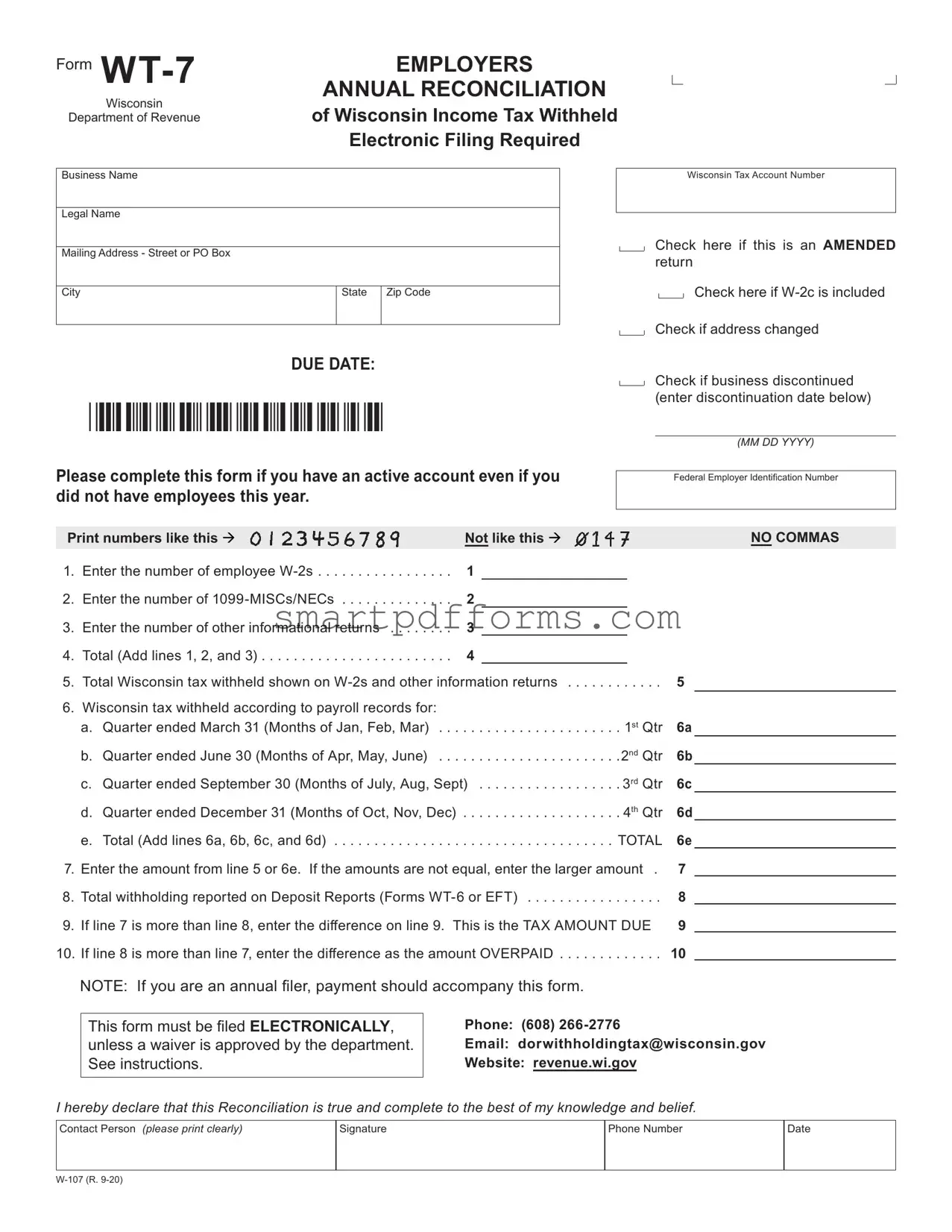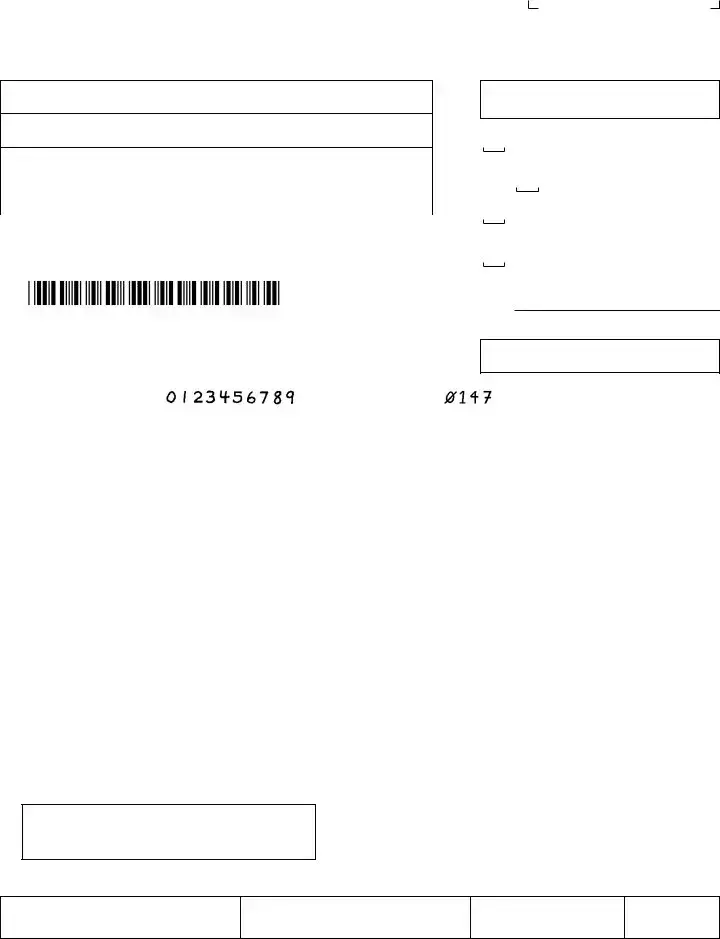The relevance of the Form WT-7 cannot be understated for those navigating the complexities of annual employer reconciliation in Wisconsin. Tasked with summarizing the Wisconsin income tax withheld from employees over the fiscal year, it is a critical document for the Department of Revenue, necessitating precise and accurate completion. The form demands the business's name, contact details, and the essential Wisconsin Tax Account Number, accompanied by checks for amendments or discontinuations. It outlines the requirement to report the number of W-2s, 1099-MISCs/NECs, and other informational returns filed throughout the year, in addition to the total Wisconsin tax withheld. Moreover, it details the withheld tax according to payroll records for each quarter, underlining the importance of meticulous record-keeping. The comparison between total withholding reported and amounts actually withheld highlights discrepancies that need to be addressed, either as taxes due or overpayments. Significantly, the mandatory electronic filing unless a waiver is obtained, underscores the state's push towards modernizing and streamlining tax reporting processes. This form, by bridging the employer's payroll information with the state's taxation requirements, becomes indispensable in ensuring compliance and facilitating a smoother reconciliation process at the year-end.

